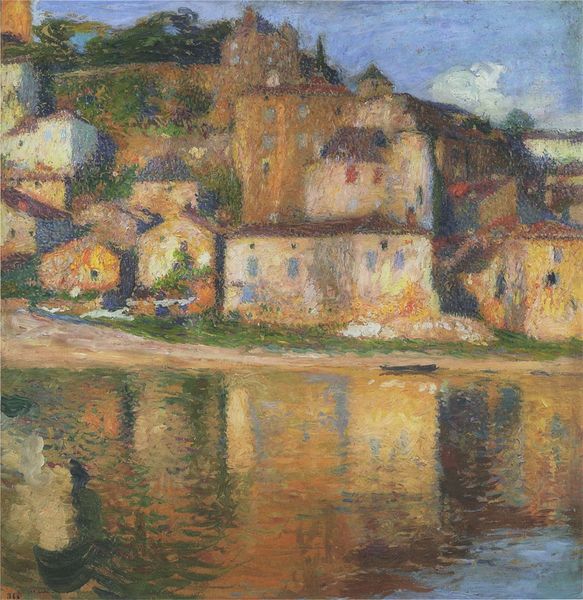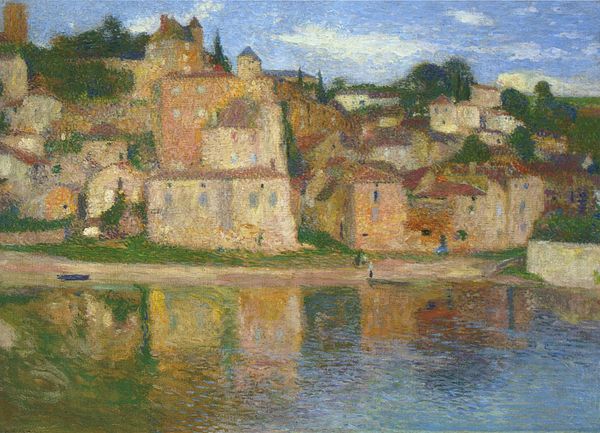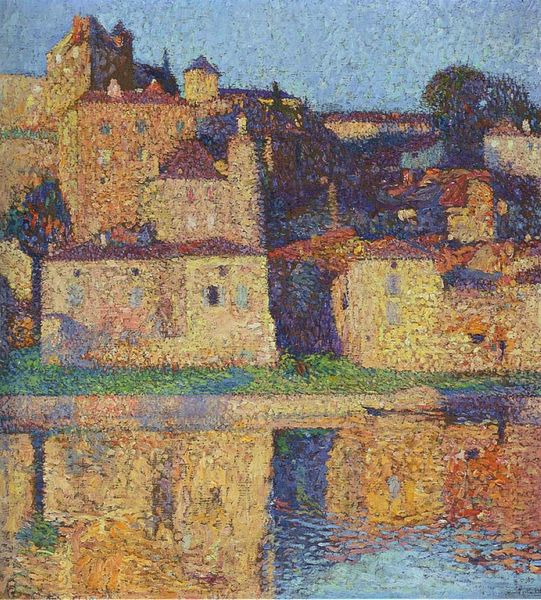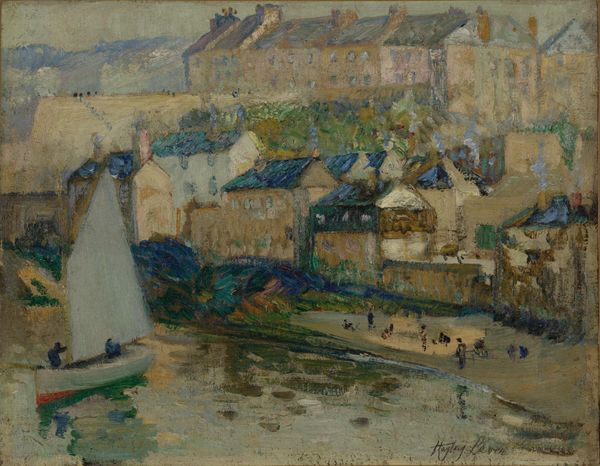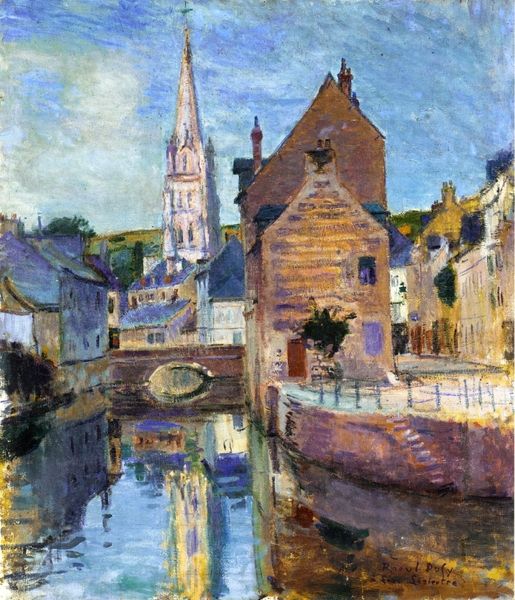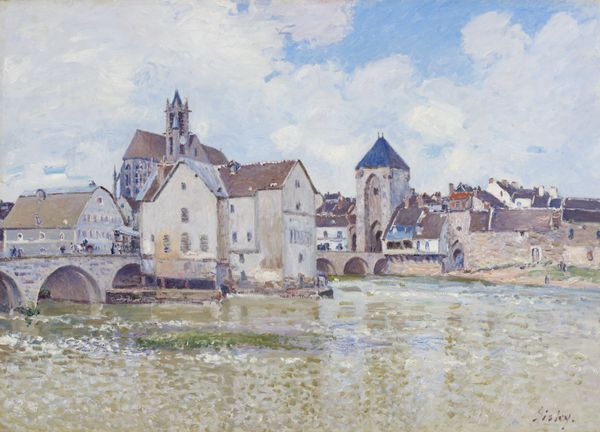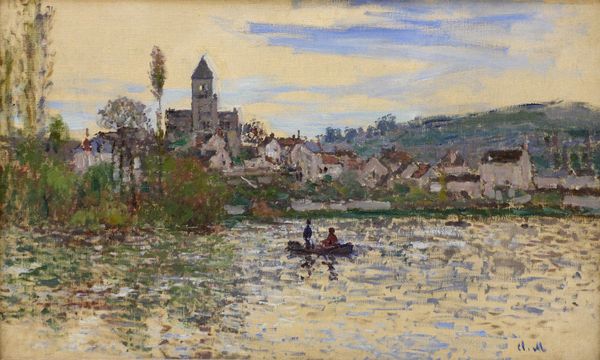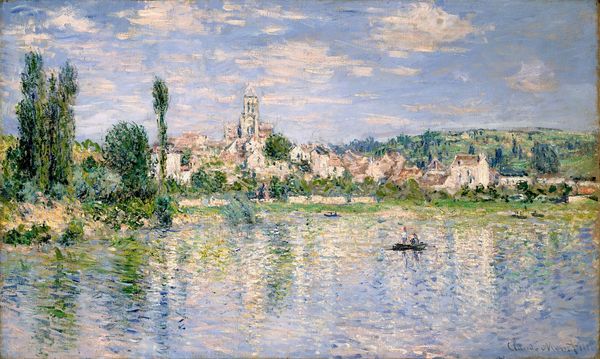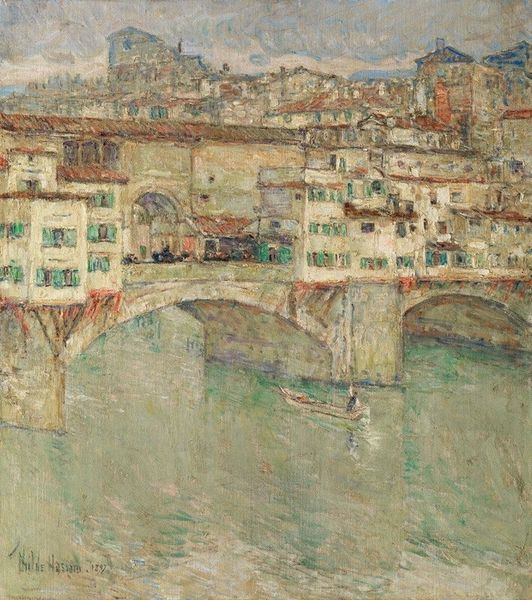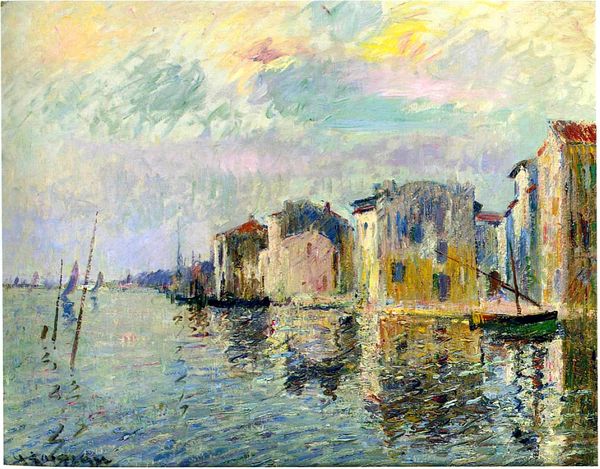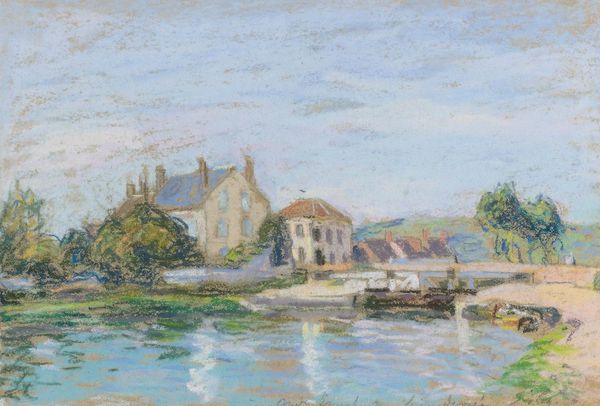
painting, oil-paint
#
painting
#
impressionism
#
oil-paint
#
landscape
#
river
#
house
#
oil painting
#
water
#
cityscape
#
watercolor
#
building
Copyright: Public domain
Curator: Here we have Henri Martin's oil painting, “View of Puy l'Eveque." Editor: My initial impression is one of stillness, a placid tranquility in its reflection and muted hues. It invites a certain quiet contemplation. Curator: Indeed. The composition, primarily horizontal, reinforces that sense of calm. Notice the textured brushstrokes, building up layers of paint, especially in the depiction of the buildings. Editor: It's almost pointillist in application, and speaks to the isolation inherent in depicting community as a series of tiny, separated dots, like societal atomization. Were there notable social disruptions or upheavals happening that might mirror the artist's perception and technique? Curator: It is tempting to see reflections of turmoil. However, the technique primarily fractures light, allowing Martin to capture a specific atmosphere. Semiotically, we observe color and brushstroke creating visual relationships on the picture plane, the real subject of the painting. Editor: I disagree with this emphasis. Are you suggesting art exists in a vacuum? I cannot ignore how landscapes have historically served as representations of power, land ownership, and even the picturesque ideal constructed to mask rural poverty. The fact it looks like it was painted with separate strokes shows the separation, maybe it speaks to class? Curator: One could, but there's beauty here, and I hesitate to reduce such a scene to only such a narrative. Observe how the water mirrors the town, flattening space while doubling it, creating an Escher-like experience. Editor: Perhaps instead, we should see this ‘doubling’ as reinforcing existing power structures. We must question whose reflection is being valued, who gets the idyllic version of their house doubled into an infinite number and who does not. Curator: Well, it seems we come to a familiar impasse. Though this work presents various access points for visual interpretation. Editor: Yes. Hopefully, offering a chance for all viewers to engage with the landscape tradition in a critical yet accessible way.
Comments
No comments
Be the first to comment and join the conversation on the ultimate creative platform.
